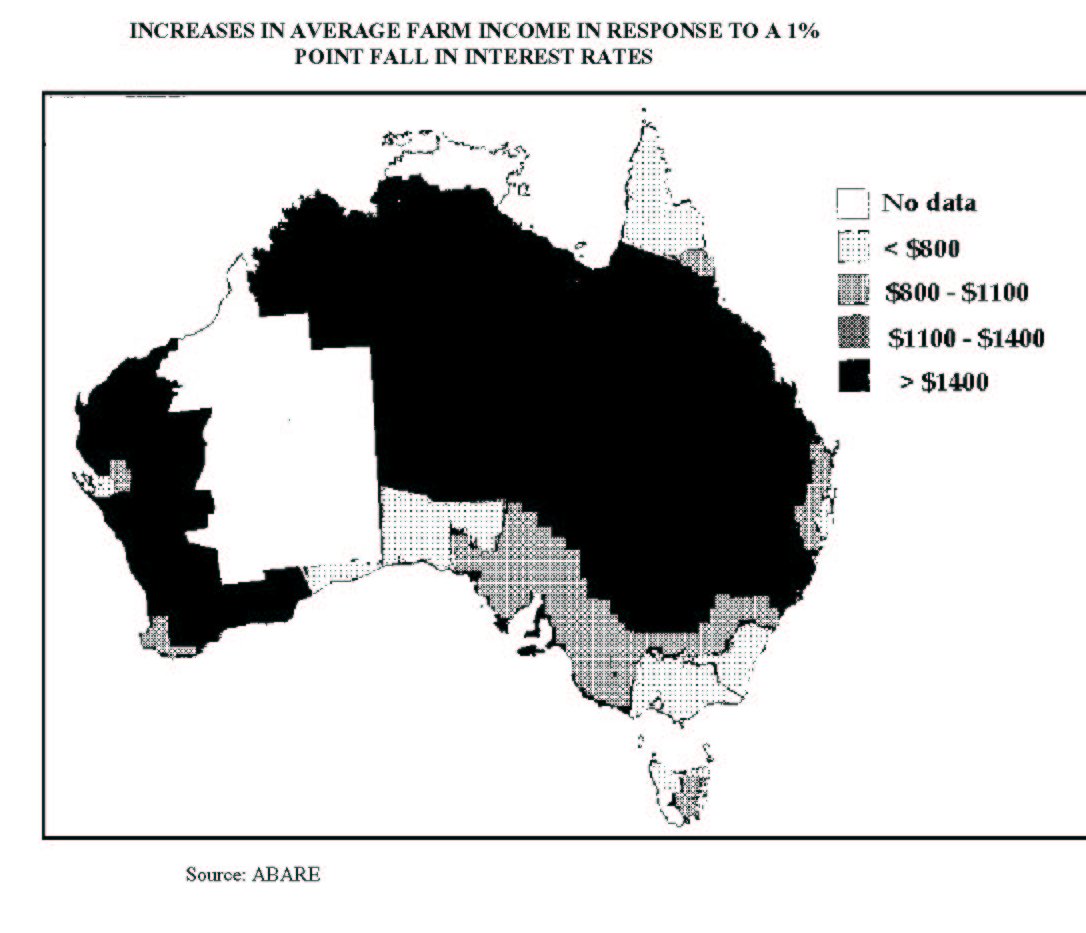INTEREST
RATES - RURAL
Interest
rates are also an important determinant of farm financial
performance. A large proportion of farms carry high levels of debt
and many were affected by the large rise in interest rates in the
late 1980s and the large falls in the rates since 1989.
Interest
rates change will affect farm incomes directly. By changing the size
of interest repayments and indirectly through any changes induced in
the exchange rate. Interest payments make up about 11% on average of
total farm cash costs. However, there is a large variation in debt
between farms. For example, 25% of all broadacre farms had debts of
more than $141 000 in 1991-92 and 12.5% carried debts of more than
$271 000. On the other hand more than 25% carried no debt in 1991-92.
In
the study it was found that the farm incomes in the intensive
cropping regions and the northern beef pastoral regions are the most
affected and the incomes of sheep pastoralists and those farmers in
the high rainfall areas are the lest affected.
Other
areas where incomes are greatly affected by interest rate changes
include the high rainfall areas in the south eastern corner of SA and
in western Victoria. In general, farm incomes in the high rainfall
areas of south eastern Australia are less affected by interest rates.
the
two maps below show the areas most affected by a 1% fall in interest
rates:
2

